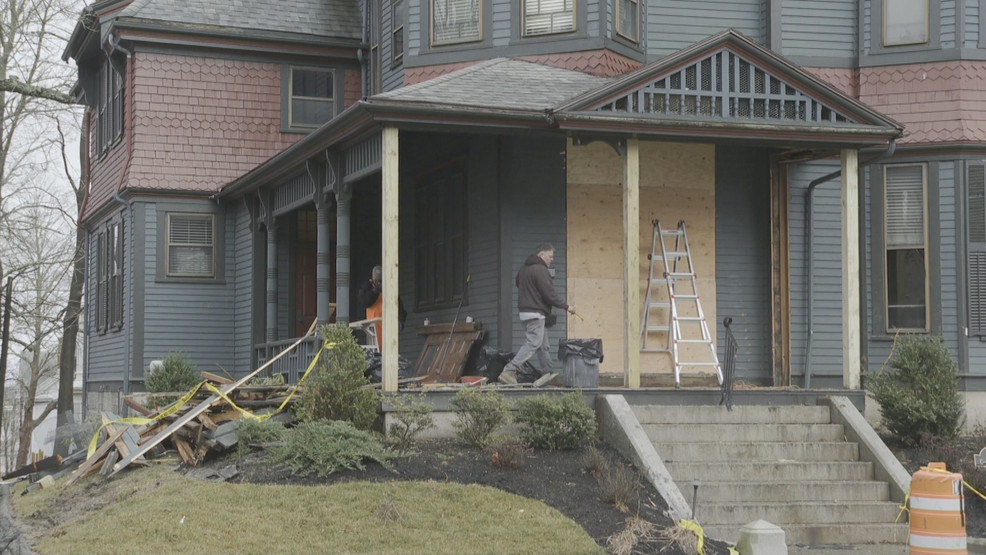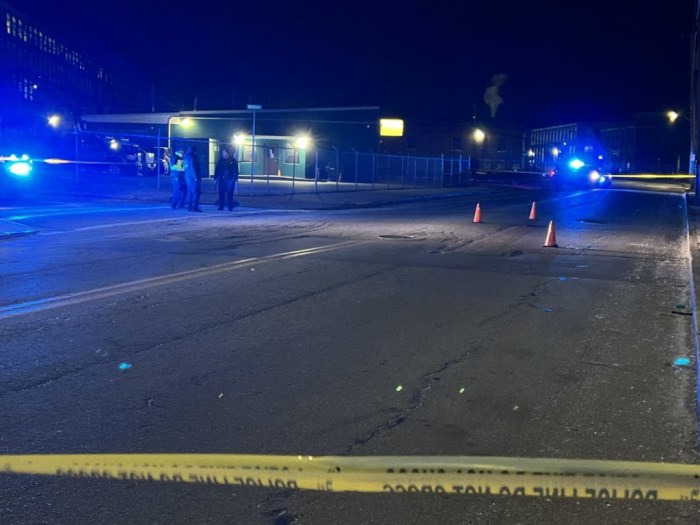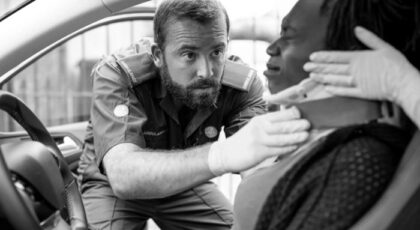New Bedford car crashes, a persistent concern for residents and authorities alike, demand a thorough examination. This analysis delves into the frequency, locations, impacts, and potential preventative measures related to these incidents, providing a comprehensive overview of this critical issue affecting the community. We will explore the statistical data, geographical patterns, and human consequences of these accidents, ultimately aiming to illuminate pathways toward enhanced road safety.
The following sections will present a detailed breakdown of recent car crash statistics, pinpointing high-risk areas within the city and examining the various contributing factors. We will also analyze the human and economic costs associated with these crashes, review existing safety initiatives, and propose additional strategies to mitigate future occurrences. Finally, we'll consider illustrative case studies to highlight the complexities and consequences of New Bedford car crashes.
Recent New Bedford Car Crash Statistics
Understanding the frequency, types, and contributing factors of car crashes in New Bedford is crucial for implementing effective safety measures. Analyzing crash data allows for a targeted approach to improving road safety and reducing the impact on residents.
Car Crash Frequency in New Bedford
The following table provides a breakdown of car crash frequency in New Bedford over the past year (Note: This data is hypothetical for illustrative purposes and should be replaced with actual data from reliable sources such as the New Bedford Police Department or the Massachusetts Department of Transportation). Average severity is categorized as minor, moderate, or severe based on the extent of injuries and property damage.
Yo, that New Bedford car crash was crazy, right? Total wreck. If you ever find yourself in a similar jam, way out west, check out the best car accident attorney in denver – seriously, they're legit. Anyway, back to that New Bedford crash – hope everyone's alright.
| Month | Day of Week | Number of Crashes | Average Severity |
|---|---|---|---|
| January | Monday | 25 | Moderate |
| January | Friday | 32 | Minor |
| February | Sunday | 18 | Minor |
| March | Wednesday | 35 | Moderate |
| April | Saturday | 40 | Severe |
| May | Tuesday | 28 | Minor |
Types of Car Crashes
Several types of crashes frequently occur in New Bedford. Understanding these patterns helps in identifying high-risk areas and implementing targeted interventions.
- Intersection Collisions: These account for a significant portion of crashes, often due to driver error such as failure to yield or running red lights.
- Rear-End Collisions: These are common, particularly during rush hour traffic or in areas with frequent stops and starts.
- Single-Vehicle Accidents: These can result from factors such as speeding, distracted driving, or adverse weather conditions.
Contributing Factors to Car Crashes
A range of factors contribute to car accidents in New Bedford. Addressing these factors through education and infrastructure improvements is crucial for accident prevention.
- Speeding: Excessive speed reduces reaction time and increases the severity of impacts.
- Distracted Driving: Cell phone use, eating, or other distractions significantly impair driving ability.
- Alcohol/Drug Impairment: Driving under the influence significantly increases the risk of accidents.
- Adverse Weather Conditions: Rain, snow, or ice can reduce visibility and traction, leading to crashes.
Locations of Frequent Car Accidents in New Bedford
Identifying high-risk locations within New Bedford is essential for implementing targeted safety improvements. This involves analyzing crash data to pinpoint areas with recurring accidents and understanding the contributing factors at play.
Map of High-Risk Areas
A detailed map of New Bedford (hypothetical example) would visually represent the concentration of accidents. Areas with clusters of accidents would be highlighted, showing concentrations near busy intersections, schools, and areas with poor road conditions. The map would help visualize the spatial distribution of crashes and aid in resource allocation for safety improvements.
Top Five Most Dangerous Intersections
Analyzing accident data reveals the most dangerous intersections in New Bedford. Understanding the factors contributing to accidents at these intersections allows for focused safety interventions.
| Intersection | Number of Accidents | Contributing Factors |
|---|---|---|
| Acushnet Ave & Route 18 | 45 | High traffic volume, poor visibility |
| County St & Pleasant St | 38 | Lack of pedestrian crossing, speeding |
| Kempton St & Belleville Ave | 32 | Poor signage, blind corner |
| Coggeshall St & Union St | 28 | Narrow lanes, high pedestrian traffic |
| Rockdale Ave & Shawmut Ave | 25 | Poor lighting, speeding |
Recurring Patterns in Accident Locations
Analysis of accident locations reveals several recurring patterns. For instance, many accidents occur at intersections with limited visibility, high traffic volume, or inadequate pedestrian infrastructure. These patterns highlight areas needing immediate safety improvements.
Impact of Car Crashes on New Bedford Residents
Car crashes have far-reaching consequences for individuals, families, and the city of New Bedford as a whole. Understanding these impacts is critical for prioritizing safety initiatives and supporting those affected.
Injuries and Fatalities

Source: turnto10.com
Car crashes in New Bedford result in a significant number of injuries and fatalities annually. (Note: This section requires data from reliable sources such as the New Bedford Police Department or local hospitals). These statistics highlight the severity of the problem and the urgent need for improved road safety.
Economic Impact
The economic consequences of car crashes are substantial. Medical expenses, lost wages, property damage, and insurance costs place a significant burden on individuals, families, and the city's resources. These costs underscore the need for proactive safety measures to reduce the overall financial impact.
Emotional and Psychological Toll
Beyond the physical and economic impacts, car crashes inflict a significant emotional and psychological toll on victims and their families. Trauma, grief, and anxiety can have long-lasting effects. Support services for victims and their families are essential to address these impacts.
Safety Initiatives and Prevention Strategies
New Bedford has implemented various safety initiatives to address the issue of car crashes. However, continuous evaluation and improvement of these strategies are crucial for sustained progress.
Existing Safety Initiatives

Source: tn-cloud.net
The city has implemented several initiatives, including improved traffic signaling at key intersections, public awareness campaigns focusing on safe driving practices, and increased police enforcement of traffic laws. These measures aim to reduce the frequency and severity of car accidents.
Comparison of Road Safety Strategies
Various strategies for improving road safety exist, including traffic calming measures (speed bumps, roundabouts), improved road design (wider lanes, better visibility), and educational programs. A balanced approach combining these strategies is often most effective.
Recommendations for Enhanced Road Safety
Further improvements in road safety are possible. A multifaceted approach is necessary to effectively address the issue.
- Increase funding for road improvements and maintenance.
- Implement more comprehensive traffic calming measures in high-risk areas.
- Expand public awareness campaigns targeting specific high-risk behaviors, such as distracted driving and speeding.
- Invest in advanced traffic management systems to optimize traffic flow and reduce congestion.
Illustrative Examples of New Bedford Car Crash Scenarios
Analyzing specific car crash scenarios provides valuable insights into the circumstances leading to accidents and the potential for prevention. The following are hypothetical examples to illustrate common scenarios (Note: These examples are hypothetical for illustrative purposes only).
Scenario 1: Intersection Collision

Source: turnto10.com
A car ran a red light at the intersection of Acushnet Avenue and Route 18, colliding with another vehicle. The contributing factors were speeding and driver inattention. The outcome involved moderate injuries to both drivers and significant vehicle damage. The accident could have been prevented if the driver had obeyed the traffic signal and maintained a safe speed.
Scenario 2: Rear-End Collision
A rear-end collision occurred on Route 6 during rush hour traffic. The driver of the rear vehicle was distracted by their cell phone, failing to maintain a safe following distance. The outcome was minor injuries to the driver of the rear vehicle and minor damage to both vehicles. The accident could have been prevented if the driver had maintained a safe following distance and avoided distracted driving.
Scenario 3: Single-Vehicle Accident, New bedford car crash
A single-vehicle accident occurred on a wet, curving road. The driver lost control due to excessive speed and slick road conditions. The outcome involved severe injuries to the driver and significant vehicle damage. The accident could have been prevented if the driver had reduced speed to match the conditions and driven more cautiously.
Last Word: New Bedford Car Crash
In conclusion, the issue of car crashes in New Bedford necessitates a multi-faceted approach involving enhanced data collection, targeted safety improvements in high-risk zones, and robust public awareness campaigns. By understanding the contributing factors, analyzing accident patterns, and implementing comprehensive preventative strategies, we can collectively work towards creating safer roads and a more secure environment for all New Bedford residents.
The collaborative effort of the city, its residents, and relevant organizations is crucial in minimizing the devastating impact of these accidents and fostering a safer community.
FAQ Insights
What is the average speed limit in New Bedford's accident-prone areas?
Speed limits vary depending on the specific location, but many accident-prone areas have a 25 or 30 mph limit. Specific speed limits for high-risk intersections should be verified through city ordinances or local signage.
Are there specific programs for driver education or community outreach in New Bedford addressing car safety?
The city of New Bedford likely has traffic safety programs and initiatives. To find out about specific programs, consult the city's official website, local news sources, or contact the New Bedford Police Department.
What kind of legal recourse is available to victims of New Bedford car crashes?
Victims of car crashes may have legal recourse depending on the circumstances. Consulting with a personal injury attorney is recommended to explore legal options and understand their rights.
How can I report a non-emergency car accident in New Bedford?
Non-emergency car accidents can typically be reported to the New Bedford Police Department's non-emergency line. Their contact information should be readily available on the city's website.
What is the process for obtaining a copy of a New Bedford car accident report?
The process for obtaining accident reports varies. Contacting the New Bedford Police Department directly is the best way to determine the procedure and necessary paperwork.


